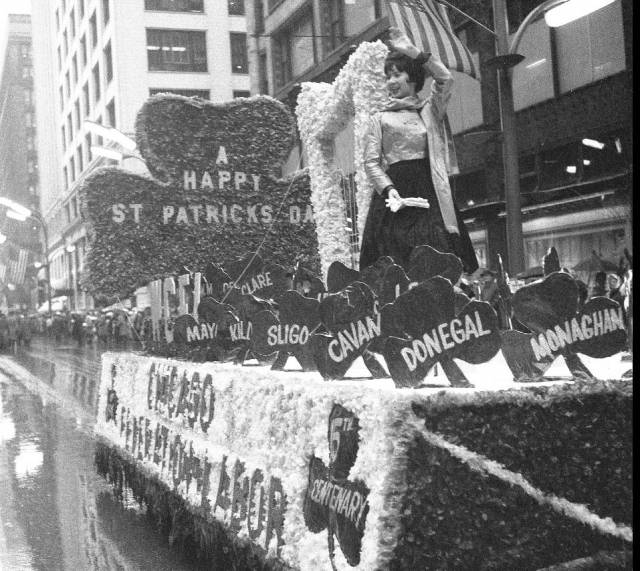The History Of Chicago's Green River And St. Patrick's Day Parades
By Staff in Arts & Entertainment on Mar 16, 2016 3:15PM

Greening the river in 2006. (Getty)
The Irish population was growing steadily in Chicago by the mid-1800s, but it wasn't until the next century that St. Patrick's Day took hold of the city every March. The city's first parade was held in 1956, five years before the river started flowing green. We took a look at just how that tradition got started.
The tradition of dyeing the river green is unique to Chicago, and it all started in 1961 thanks to business manager Stephen Bailey of the Chicago Journeymen Plumbers Local 110. That Union is still responsible for the greening today. Here's how it all went down, according to one account:
In 1961 Stephen Bailey was approached by a plumber who was wearing some white coveralls, they knew this only because they could see some of the original color. These coveralls had been mostly stained or dyed a perfect shade of green, an Irish green to better describe it. It was when Stephen Bailey asked how the coveralls got this way, that they discovered that the dye used to detect leaks into the river turned green, not just any color green, but the perfect color green.
Since it didn't cause any harm to the water, and in fact was used to detect leaks and pollution, Bailey suggested the river go green every St. Patrick's Day, and so it was, starting in 1962, when a hundred pounds of dye was poured in the river. This turned it green for a full week. Since then, some adjustments have been made, and 40 pounds of dye is used, turning the river green for about five hours.

1961. (Photo via Chuckman's Photos)
As for the parade, while Chicago’s Irish had staged a few since the 1840s, the first official one wasn't held until 1956, when Mayor Richard J. Daley made it a city-wide event. The Chicago Tribune reported on some of the numbers at the time: there were 65 marching units, 5,000 people marching, 11 bands playing, 29 colorful floats, and 100,000 spectators.
These days, we have two main parades—the downtown parade and the South Side parade—and a flowing green river.